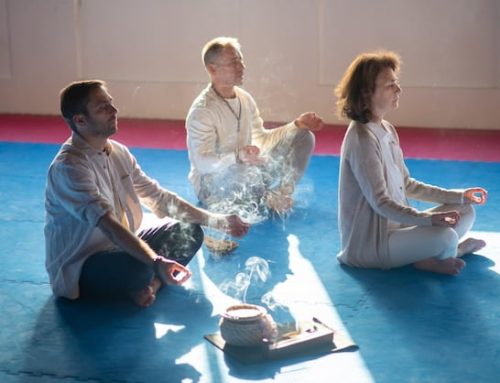The concept of chi in Tai Chi
Tai Chi is a martial art that originated in China and is practiced around the world for its health benefits. At the heart of Tai Chi is the concept of chi, which is often described as the life force or energy that flows through the body. According to traditional Chinese medicine, chi flows along energy pathways called meridians, and blockages in these pathways can cause illness or pain. In Tai Chi, practitioners focus on cultivating and directing chi to promote physical and mental health.
Where is chi stored in the body?
The location of chi in the body is a topic of debate among Tai Chi practitioners and traditional Chinese medicine practitioners. Some believe that chi resides in specific organs, such as the lungs, while others believe that it is stored in the muscles or bones. In reality, chi is not a physical substance that can be located or measured, but rather a concept that is used to describe the body’s energetic processes.
The role of the dantian in Tai Chi
One of the key concepts in Tai Chi is the dantian, which is often translated as “elixir field” or “energy center.” The dantian is a point below the navel, and is considered to be the center of the body’s energetic system. In Tai Chi, practitioners focus on breathing and movement from the dantian, which is said to help connect the upper and lower body and promote the flow of chi throughout the body.
The relationship between chi and movement
In Tai Chi, movement is seen as a way to cultivate and direct chi. The slow, flowing movements of Tai Chi are designed to help practitioners become more aware of their bodies and the movement of chi within them. By practicing Tai Chi regularly, practitioners can learn to move more efficiently and with less tension, which can help to promote the flow of chi and reduce blockages in the energy pathways.
The role of visualization in Tai Chi
Visualization is an important component of Tai Chi practice, as it is used to help direct the flow of chi through the body. Practitioners may visualize a ball of energy moving through their body as they perform movements, or imagine breathing in and out of a particular part of the body. These visualizations can help to focus the mind and promote the flow of chi through the body.
The importance of relaxation in Tai Chi
Relaxation is a key component of Tai Chi practice, as tension in the body can create blockages in the flow of chi. By relaxing the muscles and focusing on the movement of chi, practitioners can help to promote the flow of energy through the body. This can help to reduce stress and tension, and promote a sense of calm and relaxation.
The benefits of Tai Chi for health and well-being
Tai Chi has been shown to have a range of health benefits, both physical and mental. In addition to promoting the flow of chi through the body, Tai Chi has been shown to improve balance and coordination, reduce stress and anxiety, and improve cardiovascular health. Tai Chi can also be practiced by people of all ages and fitness levels, making it an accessible form of exercise for many individuals.
Conclusion
The concept of chi is central to Tai Chi practice, and is used to describe the body’s energetic processes. While the location of chi in the body is a topic of debate, the dantian is considered to be the center of the body’s energetic system in Tai Chi. By focusing on movement, visualization, and relaxation, practitioners can help to promote the flow of chi through the body, which can have a range of health benefits. Whether you are looking to improve your physical health, reduce stress and anxiety, or simply connect with your body and mind, Tai Chi is a wonderful practice to explore.





